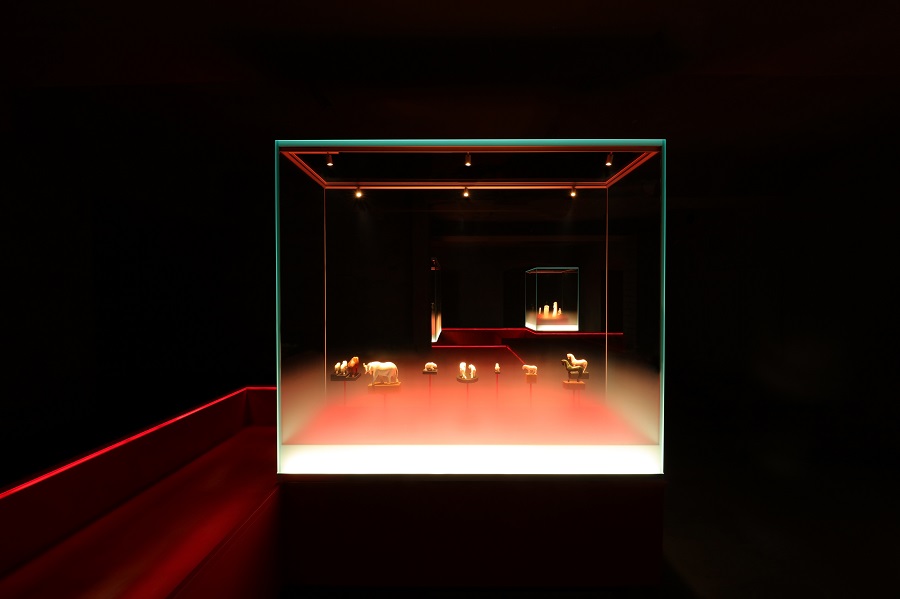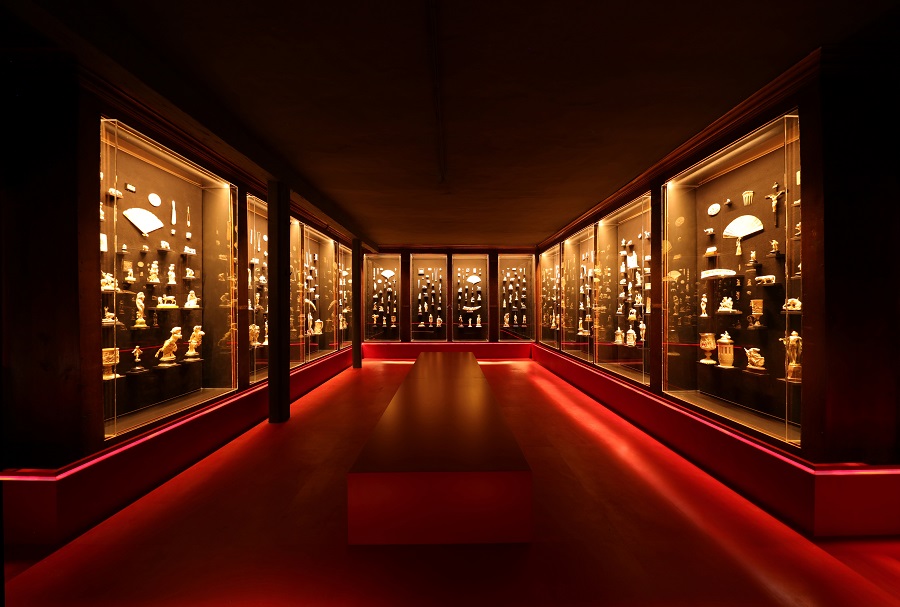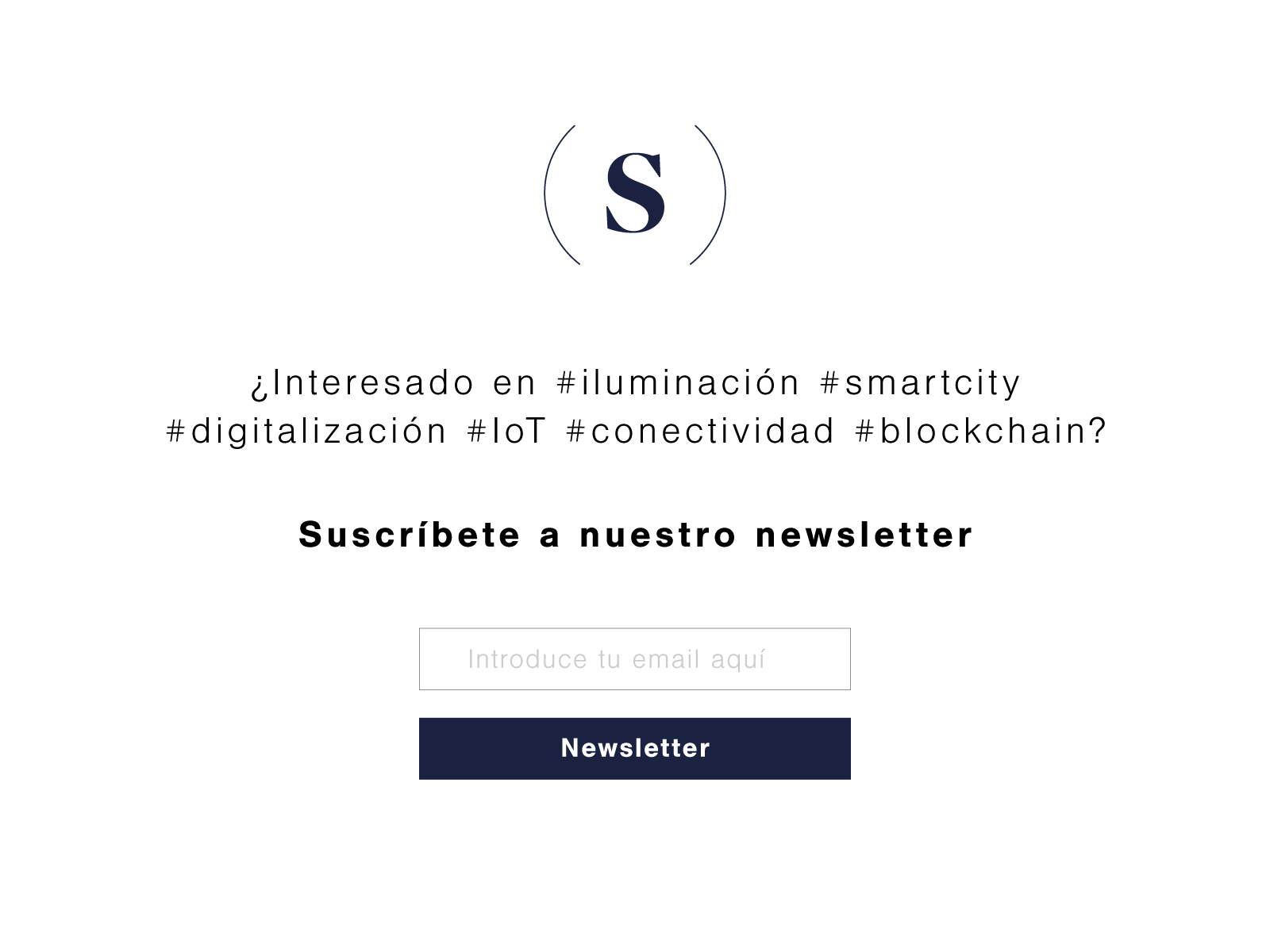Through the passion for travelling and collection of Count Franz’ I. zu Erbach-Erbach (1754-1823), the Odenwald town of Erbach became the center of German ivory carving and had exhibited its extensive collections at the Werner Borchers Halle for many years. The latter has been closed down towards the end of 2015. As of autumn 2016, a small but exquisite part of the ivory sculptures have found a new home in the Erbach Palace.
The remarkable exhibition concept of Sichau & Walter Architects BDA frees itself from the building envelope and presents the collection in darkened rooms with spatial boundaries sprayed in anthracite. Leading across this visually dissolved space, is a pier that offsets the differences in level and interconnects the showcases with a proverbial red thread. Like luminous glass cubes, these display cases are lined up on the walkway.
Showcases of Partially Frosted Glass
The show case glass panes’ lower third is frosted and fitted with edge light integrated in the base. The sanding dissolves smoothly into clear glass. By virtue of the edge light the frosting assumes a gentle brightness evocative of a haze that shrouds the object holders.
Furthermore, small profiles with miniature projectors are installed in the upper corners of the show cases. A test on site revealed that in this spatial context silver anodized profiles and luminaires are less visible than black anodized equipment.
The miniature projectors stage the exhibits in an accentuating and glare-free fashion. Larger display cases make use of an alternating layout of spot and medium optic luminaires. This creates the impression that luminous figurines emerge from a sort of haze. The converters for both, the frosted glass edge light and the miniature projectors are remote and stored in an accessible void in the show case’s plinth.

A Pier as the Red Thread
The pier and its low balustrade are clad in red leather. The walking surface transforms into a seemingly suspended path in an intangible, almost imperceptible spatial envelope by virtue of concealed LED light ribbons in its balustrade. For this purpose, a groove has been milled into the upper part of the inward-facing balustrade flank. The slanted apertures are aimed at the path and house LED light ribbons fitted with honeycomb louvers that shield the light sources even from longitudinal views. The upper part of the guard can be removed for installation and maintenance of the LED strips. Yet, the balustrade appears to be massive and carved from one piece. The LED converters are remote and hidden in a cavity underneath the raised pier.
Historical Closets
One of the spaces uses existing historical closets, now displaying a wealth of objects that have been fastened to the molleton fleece-clad rear wall. These are set in scene by linear light sources concealed inside the furniture. For this purpose, the continuous LED light strips have been installed horizontally in the overhead part and vertically in the flanks of the closets. The mounting locations have been chosen in such a fashion as to combine an optimum illumination with a minimum visibility of the light sources.
The Temporary Exhibition
The final space, dedicated to temporary exhibitions, sees the visitor off with a view of yet unprocessed elephant and mammoth tusks, thus revealing also the controversial side of the exhibit. Ceiling mounted miniature projectors underline the exhibit’s drama. These luminaires originate from the same system as the display case lighting, but are more powerful. In order to better fit into the spatial envelope’s colour, they are anodized in black. They form a frame to ensure that with changing contents exhibits in the periphery and in the center will be optimally set in scene.
The display case illumination, the glass edge lighting, the pier illumination and the orchestration of the existing closets can all be switched and dimmed individually by showcase and by room. The dimming values of each component are adjusted to meet dramaturgical and spatial criteria. Following the prevalent red hues of the showcase plinths and pier all lighting elements use warm white light. This further emphasizes the exhibits by virtue of colour perspective and helps to materialize them through focal glow.
Through the use of hidden, glare-free light sources, Licht Kunst Licht underscores the contrasting exhibition scenery and brilliantly orchestrates its treasures.
Client: Verwaltung der Staatlichen Schlösser und Gärten Hessen
(Administration of National Palaces and Gardens of Hesse)
Architect: Sichau & Walter Architekten BDA, Fulda
Occupant: Betriebsgesellschaft Schloss Erbach gGmbh
(Operating Association of Erbach Palace gGmbh)
Lighting Design: Licht Kunst Licht AG, Bonn / Berlin
Project- and team leader: Stephanie Grosse-Brockhoff
Project team: Till Armbrüster, Felix Beier
Completion: 2016
Project Size: 450 sqm
Photos: Sichau & Walter Architekten BDA



